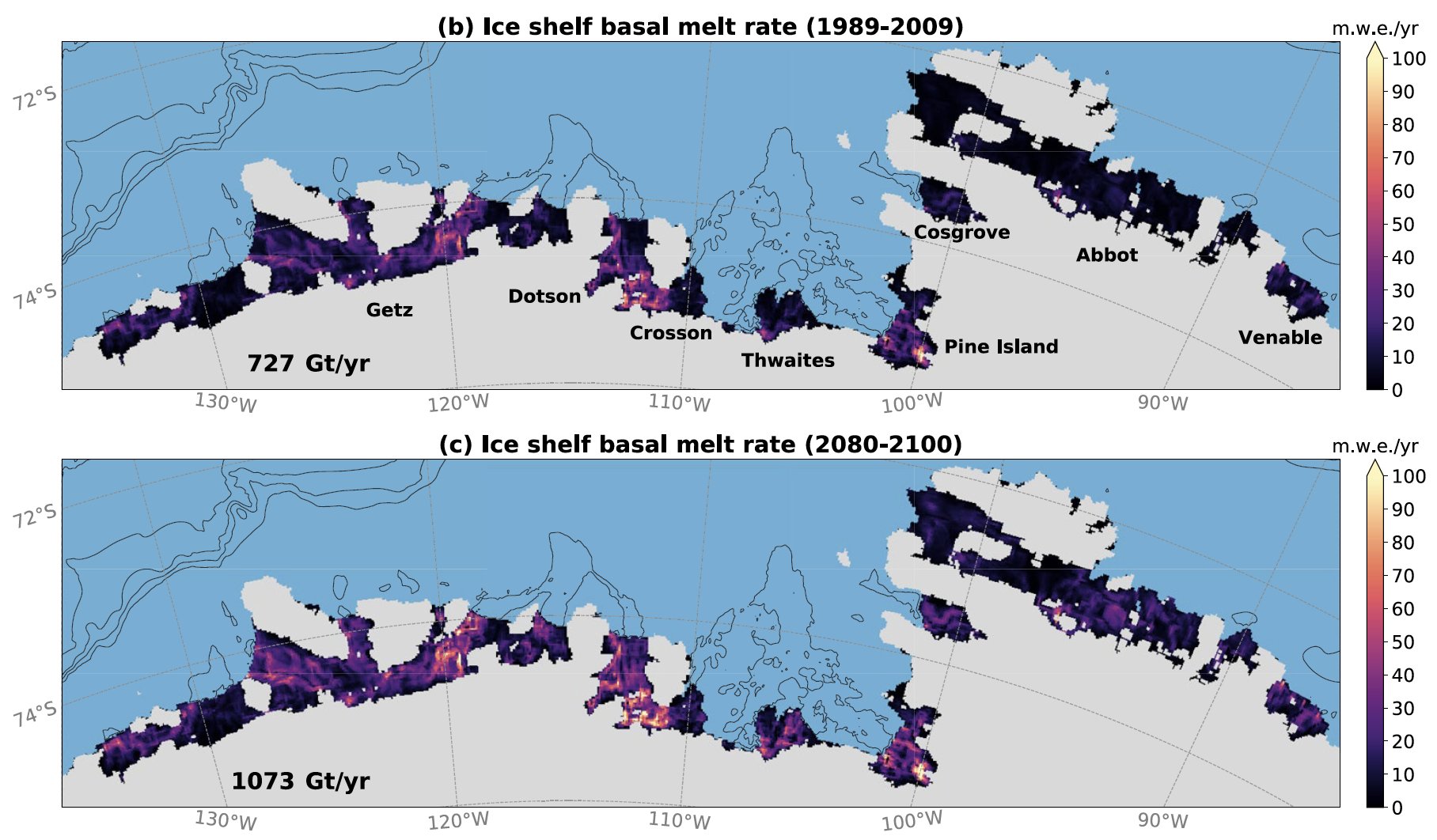New paper on ice shelf melting projections in the Amundsen Sea
The parameterisation of ocean-induced melting beneath ice shelves is a major source of uncertainty in projections of the Antarctic contribution to sea level rise (e.g., ISMIP6 results). Melting projections based on ocean models are needed to calibrate and evaluate such parametrisations, but so far, there have been very few projections of this kind (Naughten et al. 2018; Timmermann and Hellmer 2013).
In a new study published in GRL, we present presents ocean, sea ice and ice shelf melt projections for the Amundsen Sea based on a 1/12° configuration of the NEMO ocean model. As shown in the figure below, melt rates are typically multiplied by 1.4–2.2 from present day to 2100 in a high-end scenario with no climate policy. We show that changes in local/regional atmospheric forcing and in remote ocean properties both explain these changes.

Simulated ice shelf basal melt rates for 1989-2009 and 2080-2100 under the RCP8.5 emission scenario.
These projections can be used to narrow the range of basal melt parameters, on which there was very little confidence in the ISMIP6 projections (Seroussi et al., 2020) and their emulation (Edwards et al., 2021). Our results in the Amundsen Sea indicate that the most extreme melt projections used to constrain high-end sea level projections may have been significantly overestimated.
Reference
Jourdain, N. C., Mathiot, P., Burgard, C., Caillet, J. and Kittel, C. (2022). Ice shelf basal melt rates in the Amundsen Sea at the end of the 21st century. Geophysical Research Letters, e2022GL100629. https://doi.org/10.1029/2022GL100629